- Art Home
- Exhibitions
-
Explore the Collection
- Explore the Collection Home
- African Art
- American Paintings, Sculpture and Drawings
- Contemporary
- Decorative Arts and Design
- East Asian Art
- European Paintings, Sculpture and Drawings
- Fashion Arts and Textiles
- Musical Instruments
- Indigenous American Art
- Photography
- Prints
- South Asian Art, Islamic Art and Antiquities
- Conservation
- Meet the Curators
- Digital Resources
- Events & Programs Home
- Calendar
- Accessibility
- Adults
-
Families & Teens
- Families & Teens Home
- 10x10 Teen Art Expo
- Art on the Rise
- Art Together: Art Making for Families with Children Ages 3–5
- Baby Tours
- Boy Scouts / Girl Scouts
- CAM Kids Day
- Choose Your Own Gallery Adventure
- Family Storytime and Gallery Walk
- Family Studio: Art Making for Families with Children Ages 6–12
- REC Reads
- Rosenthal Education Center (REC)
- See Play Learn Kits
- Summer Camp
- Teachers
- Community Outreach
- Fundraisers
- Plan Your Own Event

- Art Home
- Exhibitions
-
Explore the Collection
- Explore the Collection Home
- African Art
- American Paintings, Sculpture and Drawings
- Contemporary
- Decorative Arts and Design
- East Asian Art
- European Paintings, Sculpture and Drawings
- Fashion Arts and Textiles
- Musical Instruments
- Indigenous American Art
- Photography
- Prints
- South Asian Art, Islamic Art and Antiquities
- Conservation
- Meet the Curators
- Digital Resources
- Events & Programs Home
- Calendar
- Accessibility
- Adults
-
Families & Teens
- Families & Teens Home
- 10x10 Teen Art Expo
- Art on the Rise
- Art Together: Art Making for Families with Children Ages 3–5
- Baby Tours
- Boy Scouts / Girl Scouts
- CAM Kids Day
- Choose Your Own Gallery Adventure
- Family Storytime and Gallery Walk
- Family Studio: Art Making for Families with Children Ages 6–12
- REC Reads
- Rosenthal Education Center (REC)
- See Play Learn Kits
- Summer Camp
- Teachers
- Community Outreach
- Fundraisers
- Plan Your Own Event
Mexican Printmakers 1920s–1950s
Mexican Printmakers 1920s–1950s
- Home
- Plan Your Visit
-
Art
- Art Home
- Exhibitions
-
Explore the Collection
- Explore the Collection Home
- African Art
- American Paintings, Sculpture and Drawings
- Contemporary
- Decorative Arts and Design
- East Asian Art
- European Paintings, Sculpture and Drawings
- Fashion Arts and Textiles
- Musical Instruments
- Indigenous American Art
- Photography
- Prints
- South Asian Art, Islamic Art and Antiquities
- Conservation
- Meet the Curators
- Digital Resources
-
Events & Programs
- Events & Programs Home
- Calendar
- Accessibility
- Adults
-
Families & Teens
- Families & Teens Home
- 10x10 Teen Art Expo
- Art on the Rise
- Art Together: Art Making for Families with Children Ages 3–5
- Baby Tours
- Boy Scouts / Girl Scouts
- CAM Kids Day
- Choose Your Own Gallery Adventure
- Family Storytime and Gallery Walk
- Family Studio: Art Making for Families with Children Ages 6–12
- REC Reads
- Rosenthal Education Center (REC)
- See Play Learn Kits
- Summer Camp
- Teachers
- Community Outreach
- Fundraisers
- Plan Your Own Event
- Give & Join
- About
- Tickets
- Calendar
- Exhibitions
- Blog
- Shop
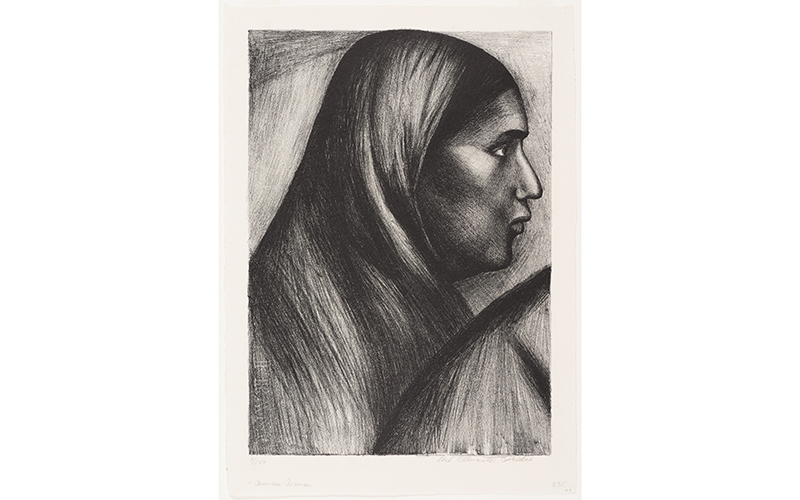
José Clemente Orozco (Mexican, 1883–1949), Mexican Woman (Mujer Mexicana), 1926, lithograph, Gift of Herbert Greer French, 1940.411
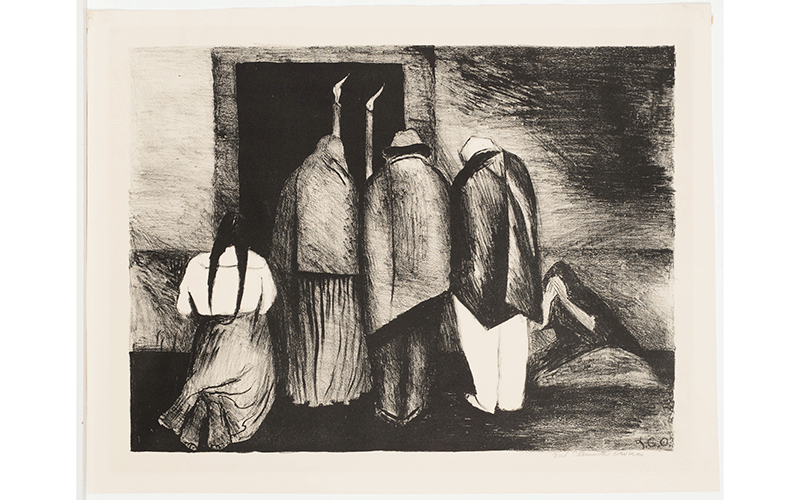
José Clemente Orozco (Mexican, 1883–1949), The Requiem (El Requiem), 1928, lithograph, Gift of Herbert Greer French, 1940.410
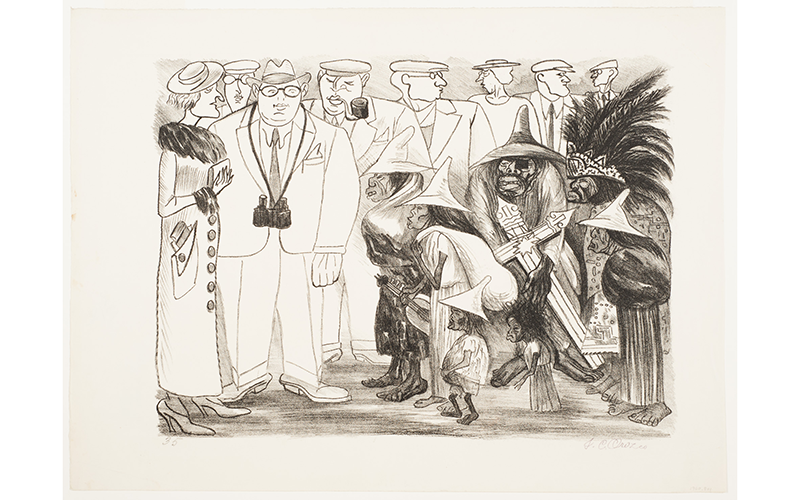
José Clemente Orozco, (Mexican, 1883–1949), Tourists and Aztecs, 1934, lithograph, The Albert P. Strietmann Collection, 1960.801
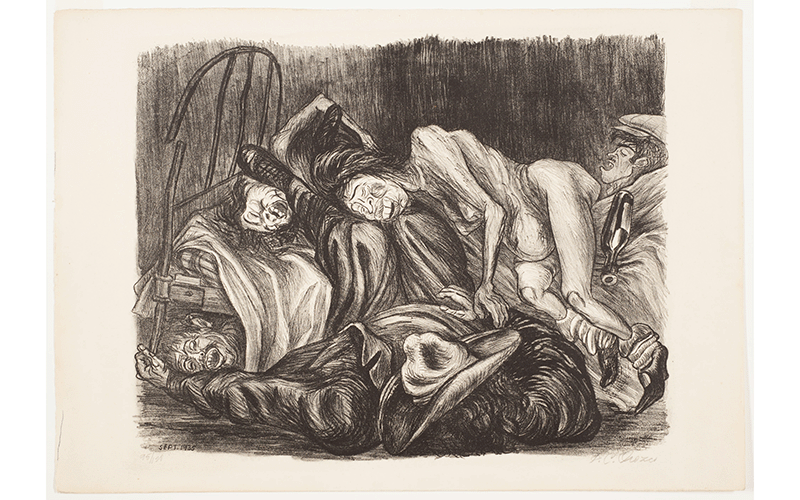
José Clemente Orozco (Mexican, 1883–1949), Women, 1935, lithograph, Gift of Elaine and Arnold Dunkelman, 1982.24
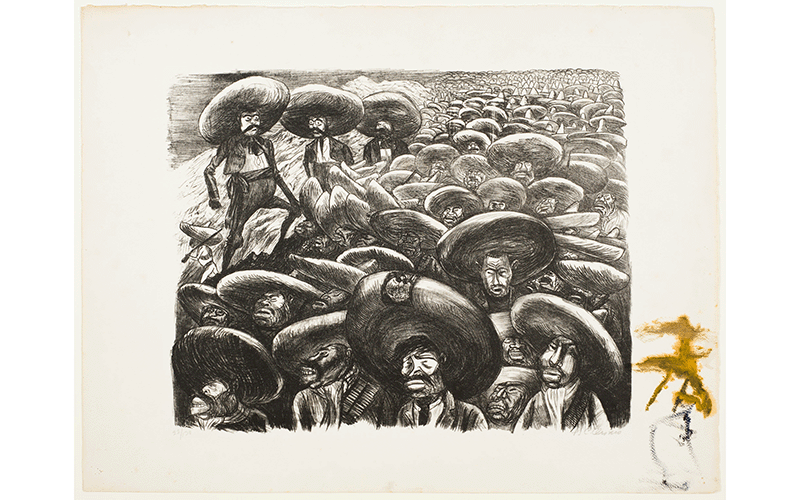
José Clemente Orozco (Mexican, 1883–1949), Zapatistas, 1935, lithograph, Gift of Elaine and Arnold Dunkelman, 1982.25
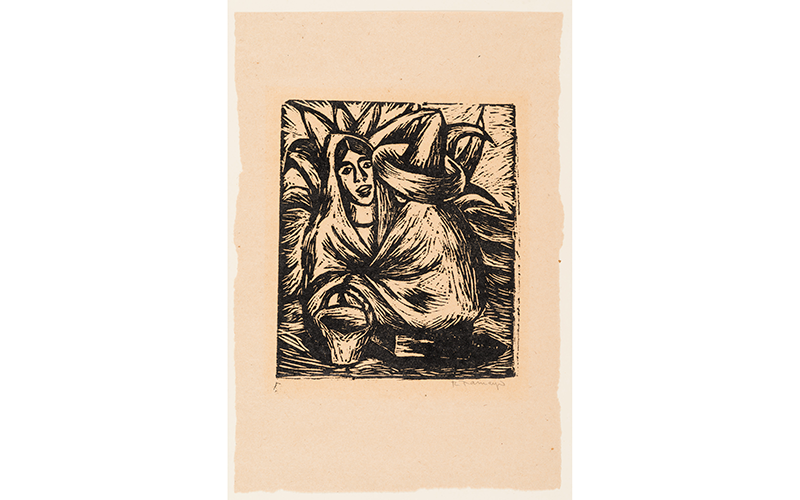
Rufino Tamayo (Mexican, 1899–1991), Mexican Peasants, 1929, linoleum cuts, Museum Purchase, 1931.69
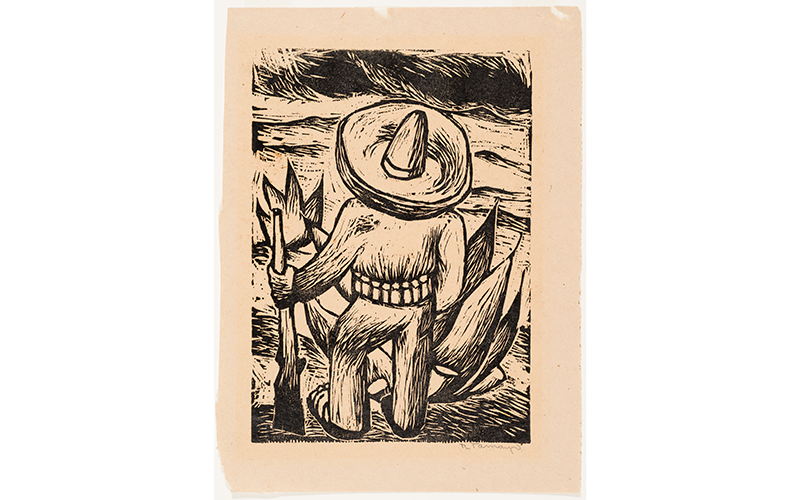
Rufino Tamayo (Mexican, 1899–1991), The Revolutionist, 1931, linoleum cut, Museum Purchase, 1931.71
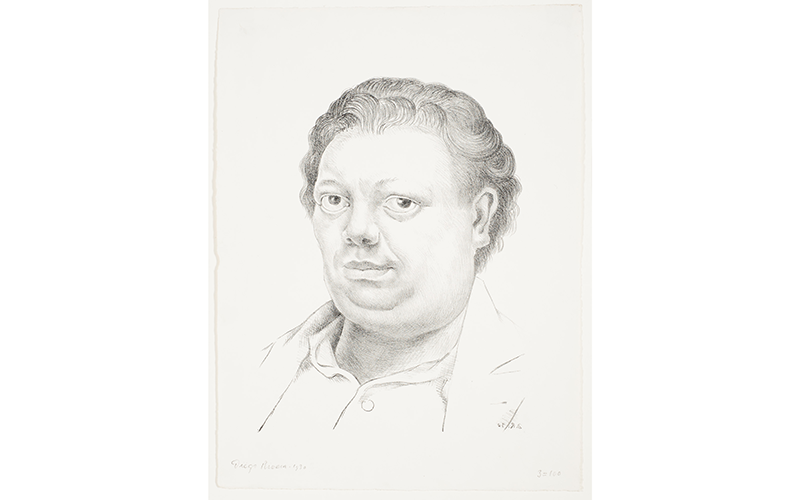
Diego Rivera (Mexican, 1886–1957), Self-Portrait, 1930, lithograph, Gift of Herbert Greer French, 1940.450
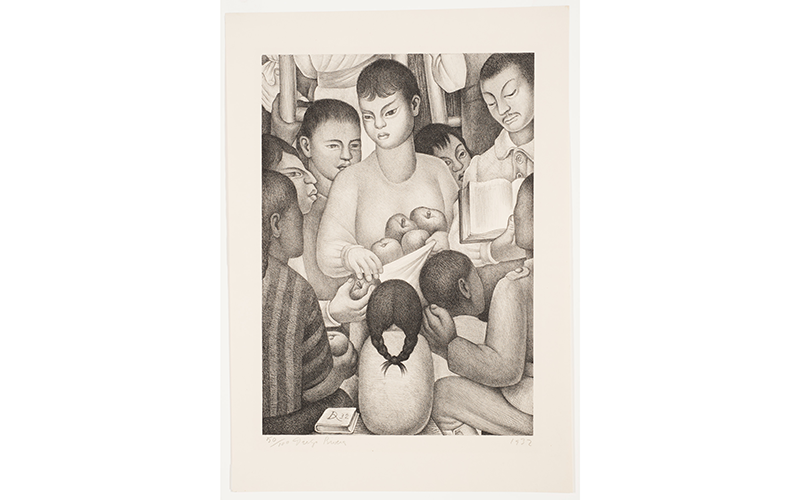
Diego Rivera (Mexican, 1886–1957), The Fruits of Labor, 1932, lithograph, Gift of Herbert Greer French, 1940.451
Mexican Printmakers 1920s–1950s
April 16, 2022–August 14, 2022
Gallery 213
One of the major social upheavals of the early twentieth century was the decade-long Mexican Revolution (1910–20). In the end, a constitutional republic replaced an entrenched dictatorship. During the post-revolutionary decades, as Mexican democracy began its difficult growth, a remarkable artistic outpouring followed. Through propagandist murals in public buildings and the distribution of printed images, art flourished as artists addressed the evolution of revolutionary ideas as outlined in the new constitution. Prints attacked Fascism and Imperialism, while promoting Indigenous rights, and educational and labor reform. Works also promoted and celebrated Mexico’s national heritage to educate the largely illiterate populace through visual storytelling. In the 1920s, murals by Diego Rivera, David Siqueiros and José Clement Orozco—“Los Tres Grandes” (The Great Three)— received international recognition. Spurred by their success they created prints as an effective means of raising social awareness.
A little-known fact is the extent to which American print publishers participated in the post-revolution Mexican print movement. The Weyhe Gallery in New York championed Mexican art by commissioning and exhibiting prints in the 1920s and 1930s. The earliest lithographs featured mural details related to the revolution, thus creating powerful symbols of national identity. Taller de Gráfica Popular founded in Mexico City in 1937 and Associated American Artists in the 1940s furthered the dissemination of Mexican printmaking. Participants created powerful genre scenes drawing attention to the struggles of Mexican life. The prints generated as part of the post-revolutionary movement strongly influenced American Regionalism and the WPA prints of the Depression-era.
Cincinnati, OH 45202
Toll Free: 1 (877) 472-4226
Museum Hours
Museum Shop
Terrace Café
Library
The Cincinnati Art Museum is supported by the generosity of tens of thousands of contributors to the ArtsWave Community Campaign, the region's primary source for arts funding.

Free general admission to the Cincinnati Art Museum is made possible by a gift from the Rosenthal Family Foundation. Exhibition pricing may vary. Parking at the Cincinnati Art Museum is free.
Generous support for our extended Thursday hours is provided by Art Bridges Foundation’s Access for All program.

General operating support provided by:



